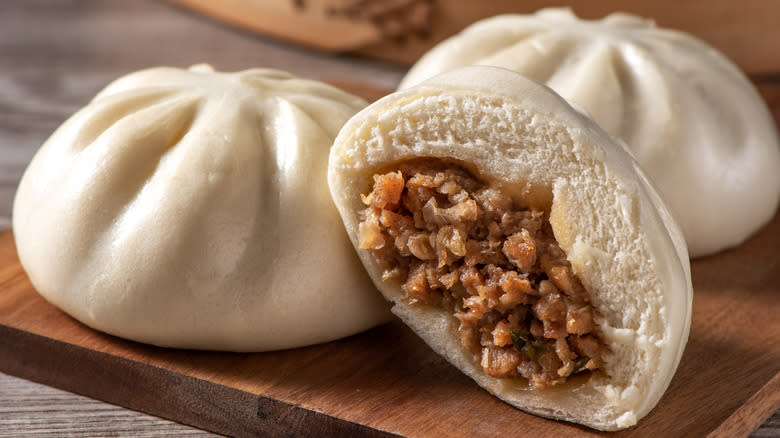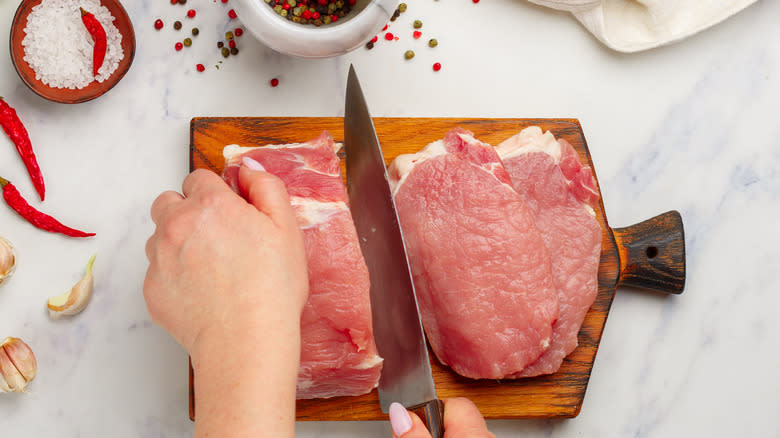The Texture Tip For Perfectly Bouncy Steamed Pork Buns Comes Down To The Mixing

If you've ever had a truly great steamed pork bun, you know the feeling of biting into a fluffy, light exterior wrapped around a savory, juicy filling. It's the perfect combination of soft and chewy, with a burst of flavor in every bite. But did you ever wonder what gives the filling that brilliant balance of tenderness and bounce? The answer lies in the technique used to mix the pork.
When making these Chinese buns, the goal is to create a filling that's moist and tender with just the right amount of chewiness. This texture comes from how the proteins in the pork interact with each other during the mixing process. So to do it right, you need to stir the pork quickly and consistently in one direction. As you mix, you'll notice the meat starting to stick together. This stickiness is a good sign — it means you're activating the proteins that help the meat maintain its structure during steaming.
For an extra boost of bounciness, apart from mixing, pick up the meat and slap it against the bowl a few times. The impact of throwing the pork helps further reinforce the structure of the filling. After a few minutes of this vigorous mixing and throwing, you'll have a cohesive, sticky mass that's ready to be portioned out and wrapped in dough. However, even if you get the mixing technique down, the type of meat you use can make or break your steamed pork buns.
Read more: Tips You Need When Cooking With Ground Beef
For The Best Bun Filling, Mince Your Pork By Hand

Hand-mincing meat is better than buying ground meat because it gives you control over the texture, leading to an improved end result. If you go for store-bought pre-ground pork, you run the risk of getting a filling that's crumbly and lacks that satisfying bounce. That's because pre-ground pork is processed in a way that doesn't work the fibers properly.
To hand-mince pork, you'll need a sturdy wooden chopping board and a sharp cleaver or large kitchen knife. Start with slightly frozen pork. This makes it easier to cut and gives you more control over the size of the pieces. First, slice the pork into thin strips. Then, cut across the strips to create small cubes. Once you have the cubes, use the knife to shred the meat into the smallest pieces possible.
Hand-mincing also allows you to check and regulate the amount of fat you'll include in the filling. A good amount is about a 6:4 lean-to-fat ratio. Therefore, by mincing your own pork, you're not just ensuring a better texture, you're also taking control of the flavor. So, next time you're craving a Chinese dish and want to prepare steamed pork buns, take your time to mince your meat then work the pork until it becomes sticky, and you'll be rewarded with buns that are a true delight to eat.
Read the original article on Tasting Table


